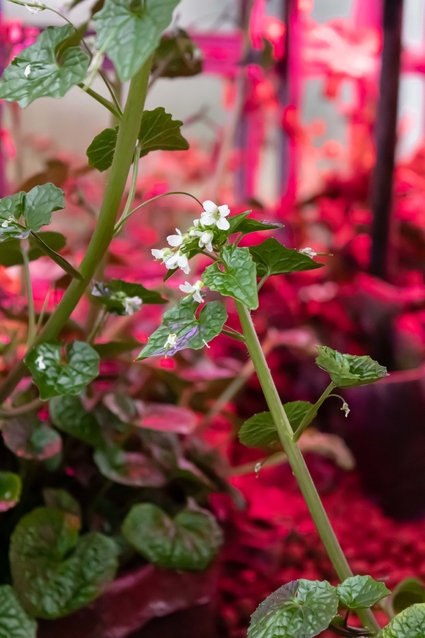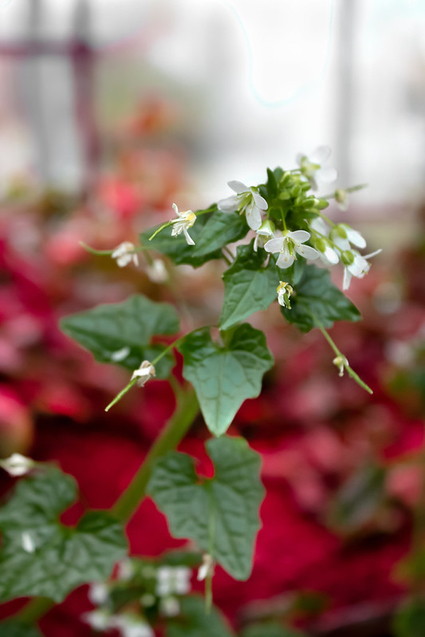Over the summer of 2021 we started growing Wasabi after a first attempt cut short by marauding snails. This time we checked and made sure conditions were just right for optimal growth. Our system already mimics the ebb and flow of natural river beds, of which this plant is fond of. Planting in lower growbeds also helps provide the shade it prefers, on Japanese forest beds. We also tried a variety of growing mediums, namely hydro pebbles, mixes of perlite and coco coir (30:70), and perlite, coco and sand (30:20:50). To prevent repeated attacks by slugs and snails alike, the felt bags used were lined with copper tape.
Well 6 months later, we are happy to report these changes seem to have done the trick. The leaves show a deep dark green, sign of the plant’s good health, and no slug trail or eaten leaves have been noticed. With sunny days slowly coming back, or wasabi has also started to send out flower stalks. Some of these smooth stalks grow up to knee length, just as much as they would in nature. It seems the plants in the bottom growbeds with the most shade, and growing on coco coir and sand are doing the best. On top of encouraging us with the direction we’ve taken, the delicate white flowers are edible, and can be fried, steeped, or cooked in soups.
After growing to their full length, flower stalks bend and fall on the ground. 40 to 60 days after flowering seed pods start to appear, and drop into the soil, thus starting propagating plants. The next step for us is to look out for these pods and collect the seeds before they drop in the growbeds, and start propagating our Wasabi. This is going to be another challenge in itself as Wasabi seeds are notoriously difficult to germinate.

